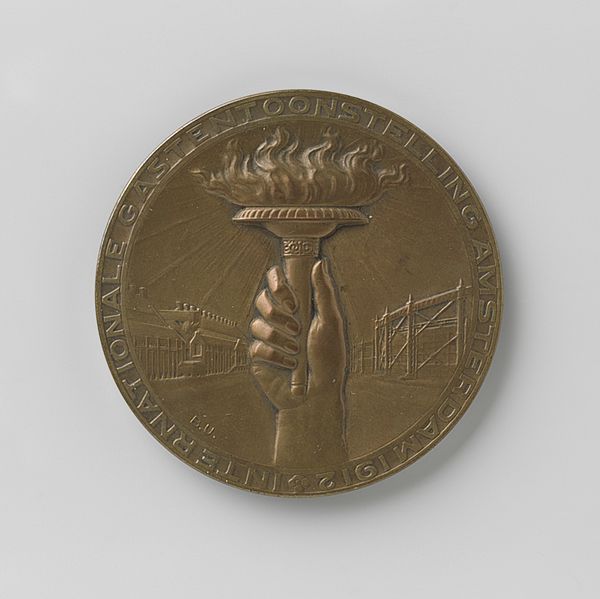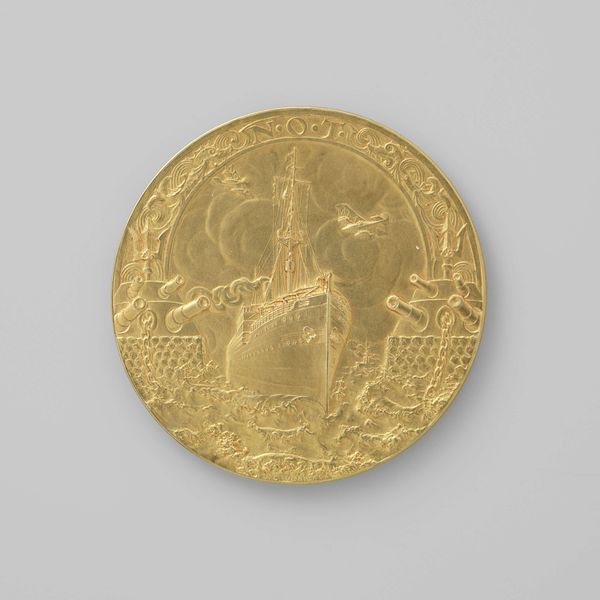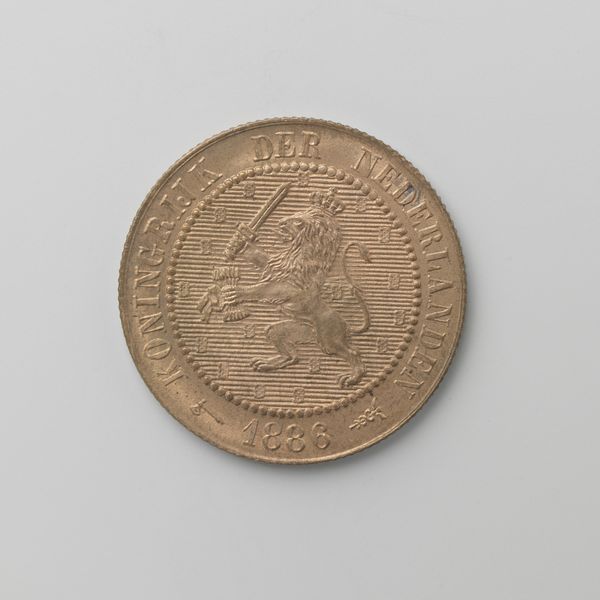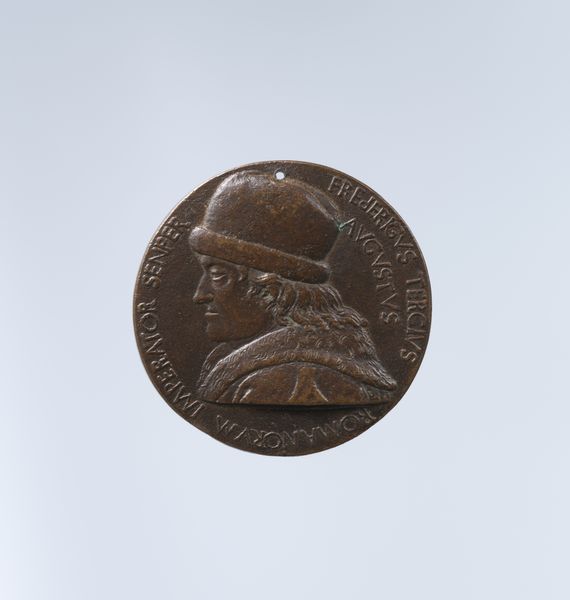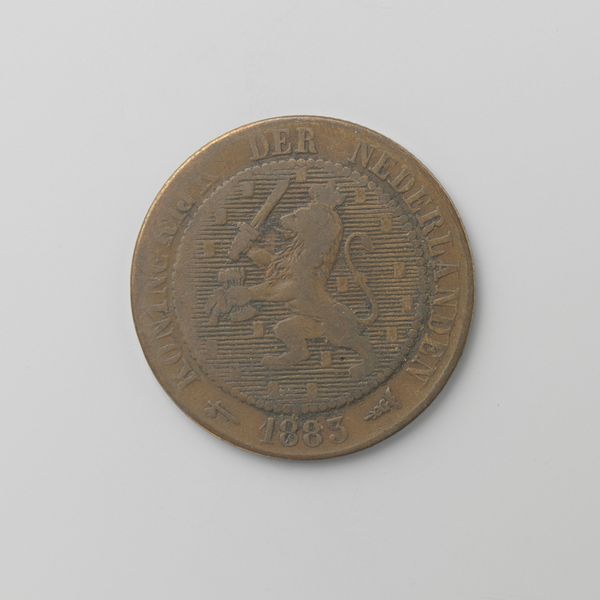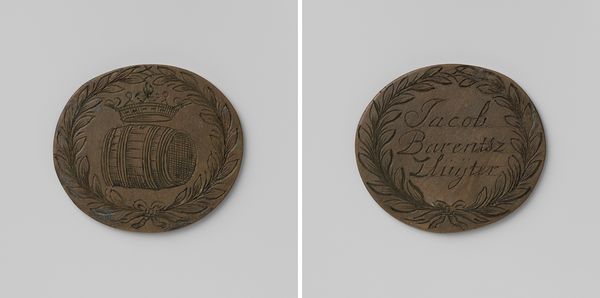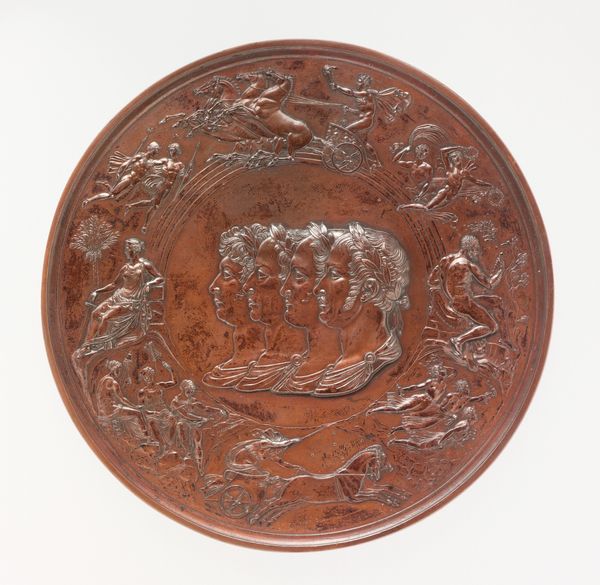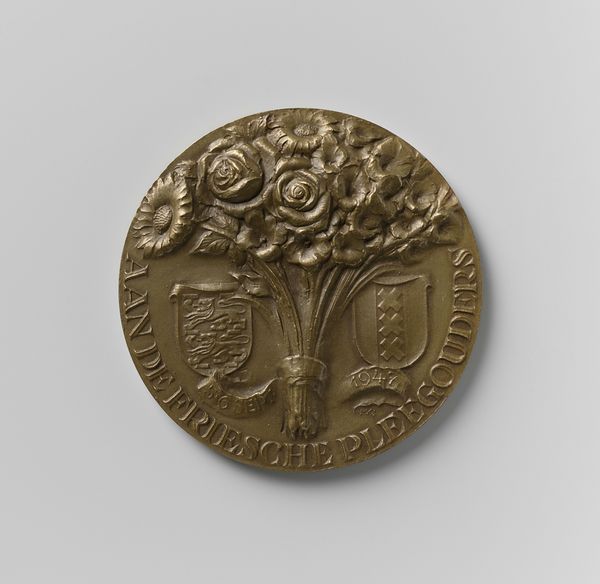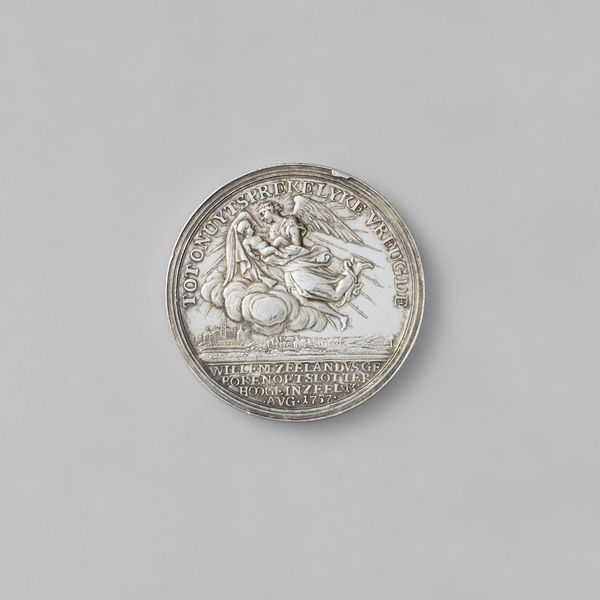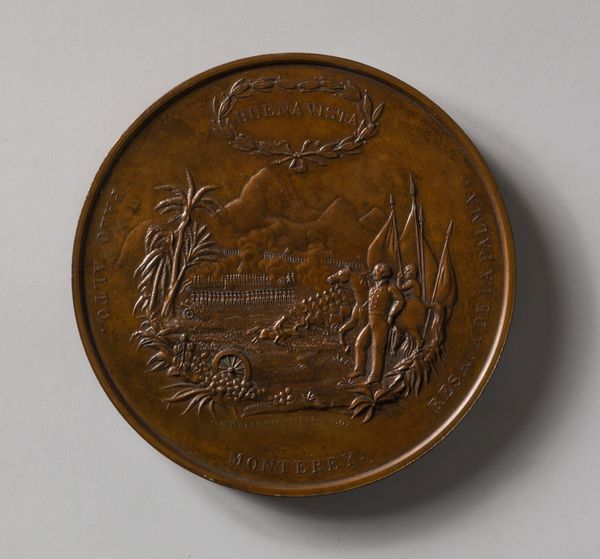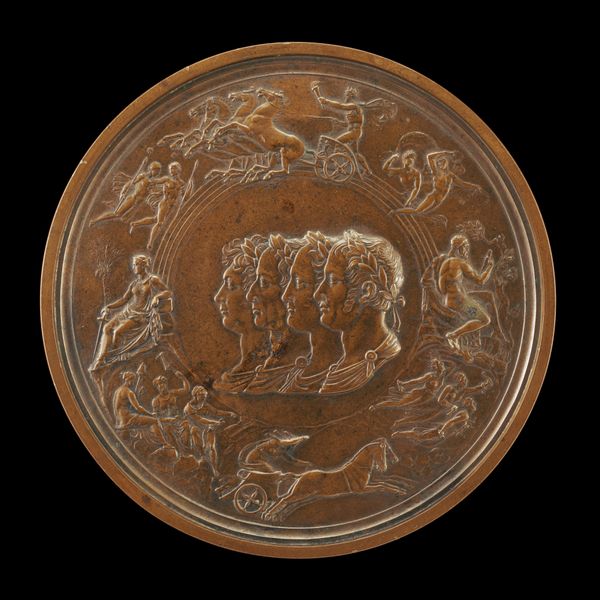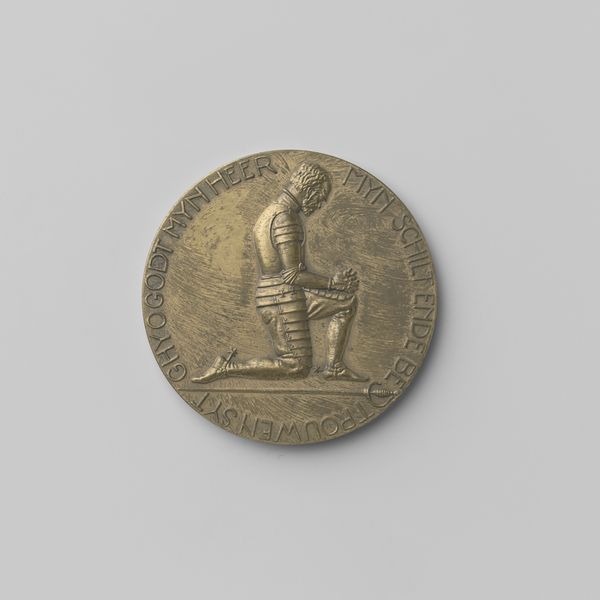
relief, bronze
#
relief
#
landscape
#
bronze
#
figuration
#
romanesque
Copyright: Rijks Museum: Open Domain
Editor: Here we have Lambertus Zijl’s bronze relief, "Penning met buffels en paarden," which translates to "Medal with buffaloes and horses," made sometime between 1876 and 1947. It seems to depict oxen pulling a plow, set against a landscape. It has a stoic mood, and I'm struck by how this seemingly simple scene evokes larger ideas of labor and the relationship between humans and animals. What do you see in this piece? Curator: I see a complex interplay of power, exploitation, and perhaps even a warped sense of progress embedded within this seemingly pastoral scene. This medal, while small, speaks volumes about the societal structures and values that normalize the subjugation of animals for human gain. Consider the phrase inscribed on the medal – "DUCITE ARATRA BOVES" – which translates to "plow with oxen". Editor: So, the phrase reinforces this idea of forced labour? Curator: Exactly! The phrase naturalizes this unequal relationship and it also links the work to ancient Roman ideals, so we should examine this idealization of rural life. It romanticizes agricultural labor, obscuring the harsh realities of the exploitation experienced by animals and farmworkers. Doesn’t the image sanitize agricultural exploitation, inviting us to celebrate an ideal while hiding the uncomfortable realities beneath the surface? Editor: I hadn't thought about it that way, but it definitely presents a romanticized image of that kind of labor. So where does this leave us in thinking about this work? Curator: Recognizing how artworks like this reinforce certain power structures is the first step in dismantling them. Examining its context allows us to critique its message. I would argue it pushes us to consider a perspective of empathy and social justice. What do you think? Editor: I agree! I now see how crucial it is to analyze art beyond its surface aesthetics. Understanding the historical context opens up critical avenues for examining these embedded socio-political dimensions of power.
Comments
No comments
Be the first to comment and join the conversation on the ultimate creative platform.
